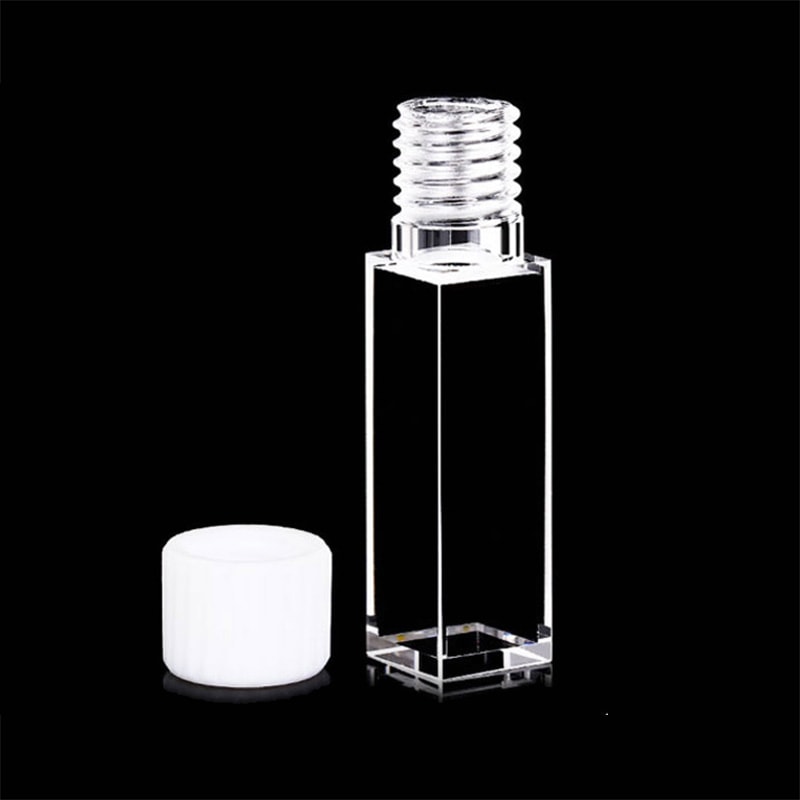The spectrophotometry procedure is the cornerstone for scientific discovery. It is a way to discover the secrets of radiation absorption and transmission at certain wavelengths. The cuvette is at the center of spectrophotometry. It’s an easy yet vital container used to store samples for analysis. It might appear to be simple however their intricate layout that spans from the length of cuvette paths to the selection of materials which is the key to obtaining accurate information about the concentration of substances and quality. We’ll explore this fascinating world, where cuvette dimensions and dimensions affect the outcomes of every test.
Power of Cuvette Pathlength
Imagine an light beam moving through a fluid sample. What happens is heavily dependent on the length of the cuvette or the distance at which the light travels. A typical 1 cm path length cuvette is typically the preferred choice for many laboratories, and is able to strike a balance between sensitiveness and practicality. Why is this important? The longer the length of the light path will be, the more of light that is being absorbed. Thus, the light signal is amplified for weak samples. A shorter path can make a significant difference when using highly concentrated solutions, such as the nucleic acid or proteins. This reduces the quantity of dilution necessary, saving precious samples and cutting down on preparation times. What’s the key takeaway from this? It’s an art ensure that the length of a path is in line with specifications for the sample. This increases accuracy.

Image credit: cuvet.co
Cuvette Dimensions and Size It’s more Than You Think
It’s not only about the volume of liquid that can fit in the vessel, it’s important to consider how the vessel interacts the spectrophotometer. These containers come in a array of sizes and shapes, each tailored to specific requirements. Semi-micro cuvettes have smaller sizes but have more robust walls. They are suitable for samples with small volumes. The thicker walls reduce the amount of space within, which allows light to travel through without any loss of droplets. When comparing this to an ordinary cuvette, the difference is striking with fewer pipetting steps, fewer errors, and outcomes that are long-lasting. It’s an ingenious tweak which shows that size isn’t just a numerical value, it’s also a factor of strategic importance.
The 1 cm path length Cuvette is a favorite in labs.
Why does the one-centimeter path length cuvette reign supreme in so many tests? It’s the ideal choice for biochemical measurements when the samples are in short supply and milliliters are a lot. This design is a classic and provides reliable results of absorbance, without overburdening the detector. It’s ideal to be used for anything, including DNA purity tests to enzyme tests. However, it’s not an all-purpose hero. It’s not a universal hero. The choice of the correct instrument is important, and not just using the one you are familiar with. A wrongly matched cuvette could be compared to an un tuned instrument.
Material Matters Beyond Path and Size
Cuvette dimensions tell only half the story material choice seals the deal. High transmission rates of glass and quartz cuvettes let light flow through without interference. They’re strong, durable and are ideal for tough tasks in spectroscopy. On the other hand plastic cuvettes add value and convenience to the table. You can use them and then throw them away. There’s no need to wash, no risk of cross contamination. They are ideal for tests using aqueous solutions or DNA/RNA tests. The price? The trade-off? Quartz is the material of choice for purists. Plastic is the material of choice for the practical.
Accuracy in Practice
The great thing about cuvettes is in their flexibility. Spacers in combination with short path lengths allows for the handling of large samples and larger vessels are able to handle large amounts. Every choice of length and size and the kind of material can have an effect on the test. This may affect the quality of the results. A lab is measuring the rare protein. A semi-micro cuvette that has a short pathway can avoid dilution headaches and deliver reliable results fast. If you contrast that with an inexperienced cuvette swap and the results are distorted, it’s no wonder. It’s a reminder to remember that when it comes to spectrophotometry that the small details can have the most impact.
Cuvettes may be small, but their importance is huge. From the 1cm path length cuvette up to custom dimensions they help bridge the gap between the sample and knowledge. If you’re seeking pureness or concentration using the correct cuvette, you can turn an accurate measurement into a great evidence that precision in science starts with the tools on fingertips.